The Batswana, a term also used to denote all citizens of Botswana, refers to the country's major ethnic group. Prior to European contact, the Batswana lived as herders and farmers under tribal rule.

Gaborone is the capital and largest city of Botswana with a population of 246,325 based on the 2022 census, about 10% of the total population of Botswana. Its agglomeration is home to 421,907 inhabitants at the 2011 census.

Khama III (1837?–1923), referred to by missionaries as Khama the Good also called Khama the Great, was the Kgosi of the Bangwato people.
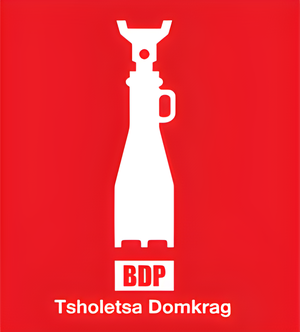
The Botswana Democratic Party is the governing party in Botswana. Its chairman is the Vice-President of Botswana, Slumber Tsogwane, and its symbol is a lift jack. The party has ruled Botswana continuously since gaining independence from the United Kingdom in 1966. The BDP is sometimes classified as a paternalistic conservative party and is also a consultative member of the Socialist International since 2014, which is a group including many worldwide social-democratic parties.

Sir Seretse Goitsebeng Maphiri Khama, GCB, KBE was a Botswanan politician who served as the first President of Botswana, a post he held from 1966 to his death in 1980.
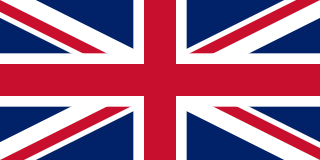
The Bechuanaland Protectorate was a protectorate established on 31 March 1885 in Southern Africa by the United Kingdom. It became the Republic of Botswana on 30 September 1966.
Serowe is an urban village in Botswana's Central District. A trade and commercial centre, it is Botswana's third largest village. Serowe has played an important role in Botswana's history, as capital for the Bamangwato people in the early 20th century and as birthplace of several of Botswana's presidents. More recently it has undergone significant development as the town and as Botswana continues to grow.

Palapye is a growing town in Botswana, situated about halfway between Francistown and Gaborone. Over the years its position has made it a convenient stopover on one of Southern Africa's principal north–south rail and road routes.
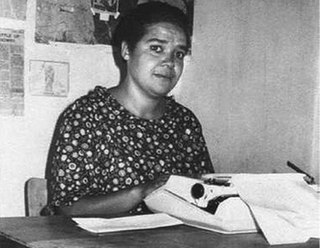
Bessie Amelia Emery Head was a South African writer who, though born in South Africa, is usually considered Botswana's most influential writer. She wrote novels, short fiction and autobiographical works that are infused with spiritual questioning and reflection.
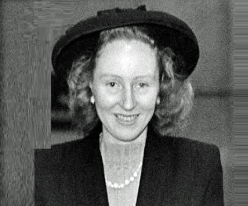
Ruth Williams Khama, Lady Khama was the wife of Botswana's first president Sir Seretse Khama, the Paramount Chief of its Bamangwato tribe. She served as the inaugural First Lady of Botswana from 1966 to 1980.

Central is the largest of Botswana's districts in terms of area and population. It encompasses the traditional homeland of the Bamangwato people. Some of the most politically connected Batswana have come from the Central District, including former President Sir Seretse Khama, former President Festus Mogae, and former President Lt. General Seretse Ian Khama. The district borders the Botswanan districts of Chobe in the north, North-West in the northwest, Ghanzi in the west, Kweneng in southwest, Kgatleng in the south and North-East in the northeast, as well as Zimbabwe also in the northeast and South Africa in the southeast.
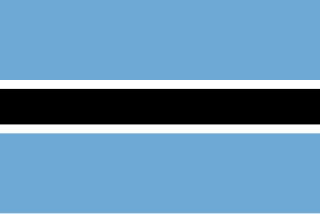
Besides referring to the language of the dominant people groups in Botswana, Setswana is the adjective used to describe the rich cultural traditions of the Batswana - whether construed as members of the Setswana ethnic groups or of all citizens of Botswana. the Batswana believe in the rich culture of Botho-Ubuntu, ‘‘People are not individuals, living in a state of independence, but part of a community, living in relationships and interdependence.’ Batswana believe in working together and in being united.
Moutlakgola Palgrave Kediretswe Nwako was a former politician and diplomat in Botswana. Nwako served as the first foreign minister from 1966-1969. He was Speaker of the National Assembly of Botswana from 1989 to 1999.

Tshekedi Khama was the regent-king of the Bamangwato tribe in 1926 after the death of Sekgoma II.
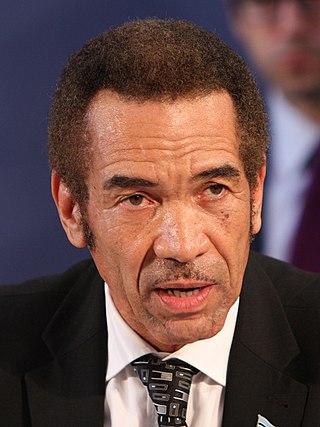
Seretse Khama Ian Khama is a Botswana politician and former military officer who was the fourth President of the Republic of Botswana from 1 April 2008 to 1 April 2018. After serving as Commander of the Botswana Defence Force, he entered politics and was Vice-President of Botswana from 1998 to 2008, then succeeded Festus Mogae as President on 1 April 2008. He won a full term in the 2009 election and was re-elected in October 2014.

The Three Dikgosi Monument is a bronze sculpture located in the Central Business District of Gaborone, Botswana. The statues depict three dikgosi : Khama III of the Bangwato, Sebele I of the Bakwena, and Bathoen I of the Bangwaketse. Events are held at the monument such as the 2008 Miss Independence Botswana. A study conducted between January and August 2007 shows that the monument is the most visited tourist destination in Gaborone.
The Independence Day of Botswana, commonly called Boipuso, is a national holiday observed in Botswana on September 30 of every year. The date celebrates Botswana's Declaration of Independence from the United Kingdom on September 30, 1966.

Semane Setlhoko Khama (1881–1937) was a mohumagadi of the BaNgwato Kingdom in the Bechuanaland Protectorate. Educated in a missionary school, she became a teacher and upon her marriage to Khama III continued to press for education for the BaNgwato. A proponent of modern medicine, she was influential in bringing modern midwifery to the area. As a devout Christian, she encouraged women's involvement in the church and the Woman's Christian Temperance Union.
The History of Botswana includes its pre-state history, its colonial period as the Bechuanaland Protectorate, and its modern history as a sovereign state.














